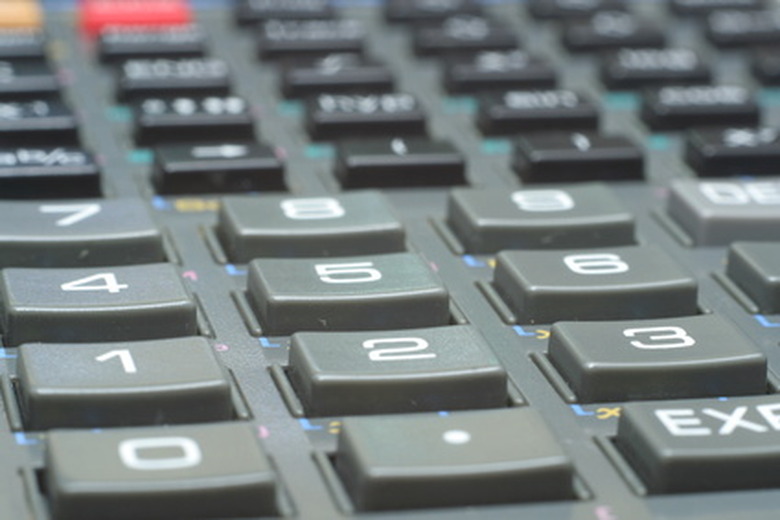How To Calculate M3
When you see M3, you may think of a particular BMW model, but in most cases, it's probably referring to a volume. M3 is short for cubic meters, which can also be written m^3, m3 and (at the post office) cbm.
A cubic meter is a fairly large volume unit. It's equal to 264 U.S. gallons, or about 20 gas fill ups in your BMW M3.
Although you can convert any volume measurement to cubic meters, you wouldn't want to use an m3 measurement for a small quantity, for which ounces or cubic centimeters would be more appropriate. Cubic meters aren't the most suitable for mid-range measurements, such as jars, bottle or gas tanks, either. Liters and gallons are better.
One place you do see an m3 measurement is in shipping, where the common abbreviation for cubic meters is cbm. Cubic meters are metric units, and if you live in the United States, you'll probably measure parcel dimensions in feet and inches, so you have to make a conversion. The shipper will probably have an m3 calculator to help you do this.
M3 Calculator Using Metric Measurements
M3 Calculator Using Metric Measurements
To calculate the volume of a container, you need a formula that relates its dimensions to its volume. The most common ones are listed below:
- Rectangular box: length × width × height
- Cubic box: length3
- Spherical container: 4π × radius3
- Cylindrical container: 4π length × radius2
- Conical container: π/3 length × radius2
If you measure dimensions in meters, you get the volume directly in m3. If you measure in centimeters, it's easy to convert to meters. Just multiply each measurement by 0.01 to express it in meters. Then, when you use the cubic meter formula, you'll get the volume in m3.
Example: A box measures 10cm × 20 cm × 25 cm. What is its volume in m3?
To convert the centimeter measurements to meters, multiply each one by 0.01. The box dimensions are then 0.1 m, 0.2m and 0.25m. The volume is then:
\((0.1 \times 0.2 \times 0.25) = 0.005\text{ m}^3\)
Using Imperial to Metric Volume Conversion Units
Using Imperial to Metric Volume Conversion Units
As long as people in the United States continue to measure distance in inches, feet and miles, people in the rest of the world will have to know how to convert between these Imperial units and their metric counterparts. Assuming you need to express volume in m3 – and not liters – you can calculate volume in cubic inches, cubic feet or gallons and convert to m3 using these conversion factors:
- 1 cubic inch = 1.64 × 10-5 m3
- 1 cubic foot = 0.024 m3
- 1 gallon = 0.0038 m3
Example: A parcel measures 12 in × 18 in × 20 in. How do you use the cubic meter formula to express its volume in cbm at the post office?
One way to do it is to calculate the volume in cubic inches and convert the inches to cbm. The volume is then (12 × 18 × 20) = 4,320 cu. in. Using the appropriate conversion factor, this is:
\(4,320 \times 1.64 \times 10^{-5} = 0.71\text{ cbm}\)
Convert Imperial to Metric, then Use the Cubic Meter Formula
Convert Imperial to Metric, then Use the Cubic Meter Formula
If you make measurements in Imperial units, an alternative way to calculate volume in m3 is to convert the length measurements to meters before you use the volume formula. To do this, you'll need these conversion factors:
- 1 inch = 0.0254 meters
- 1 foot = 0.31 meters
Example: In the example above, the box measures 12 in × 18 in × 20 in. You can convert these dimensions to meters using the appropriate conversion factor. The measurements become 12(0.0254) × 18(0.0254) × 20(0.0254) = 0.31m × 0.46m × 0.51m. The volume is therefore **0.73 cbm.**
It's a little different than the volume calculated using the previous method because of rounding.
Cite This Article
MLA
Deziel, Chris. "How To Calculate M3" sciencing.com, https://www.sciencing.com/calculate-m3-5929205/. 22 December 2020.
APA
Deziel, Chris. (2020, December 22). How To Calculate M3. sciencing.com. Retrieved from https://www.sciencing.com/calculate-m3-5929205/
Chicago
Deziel, Chris. How To Calculate M3 last modified August 30, 2022. https://www.sciencing.com/calculate-m3-5929205/
